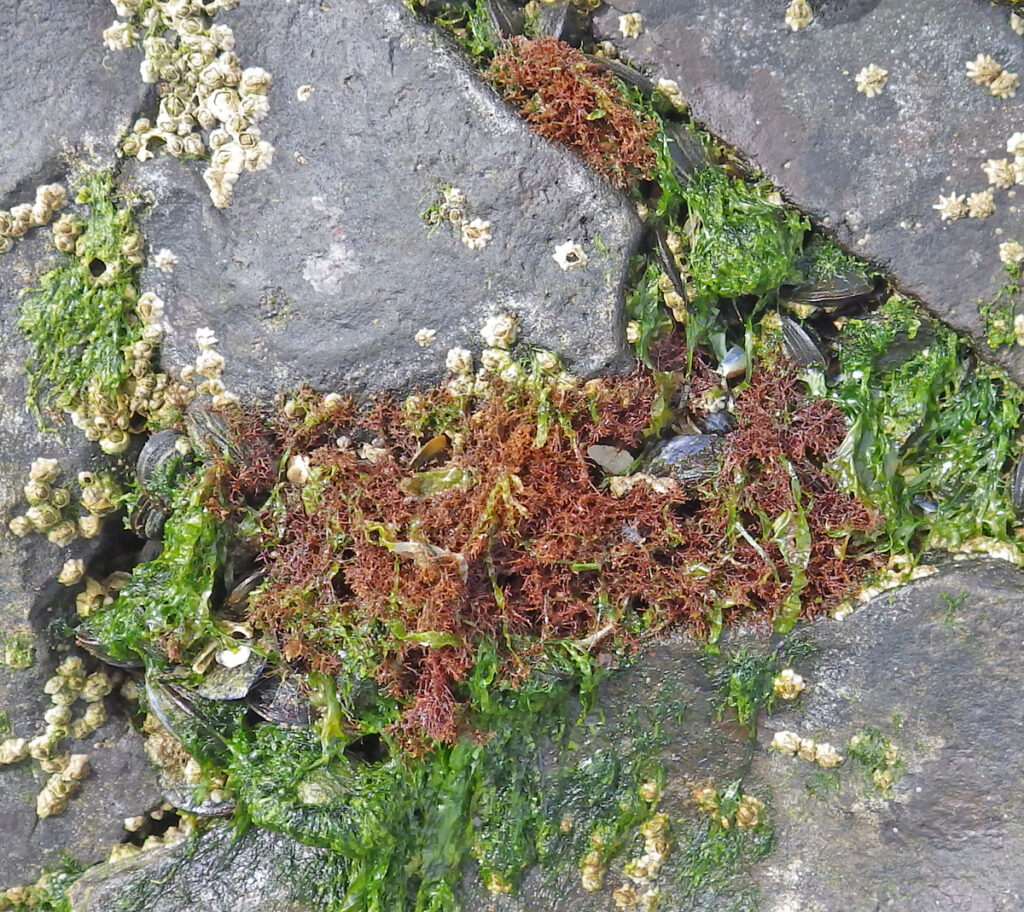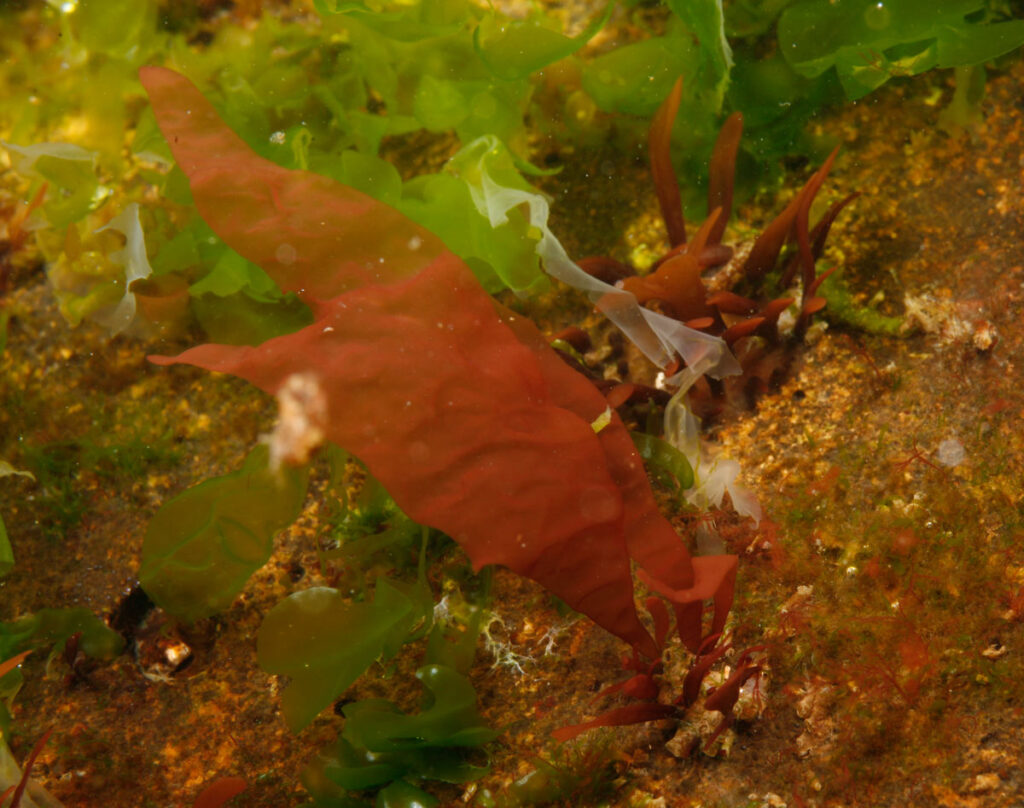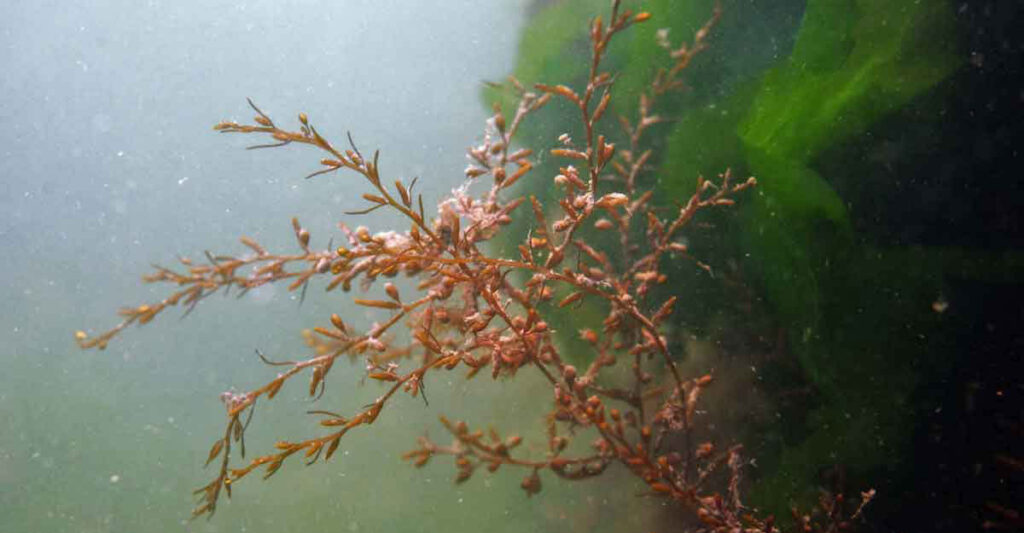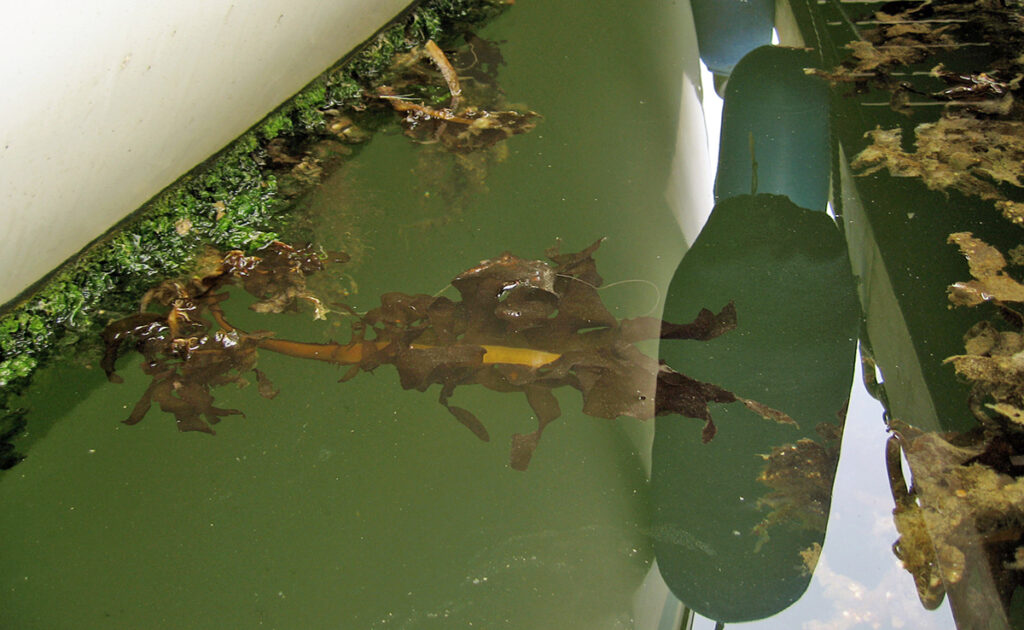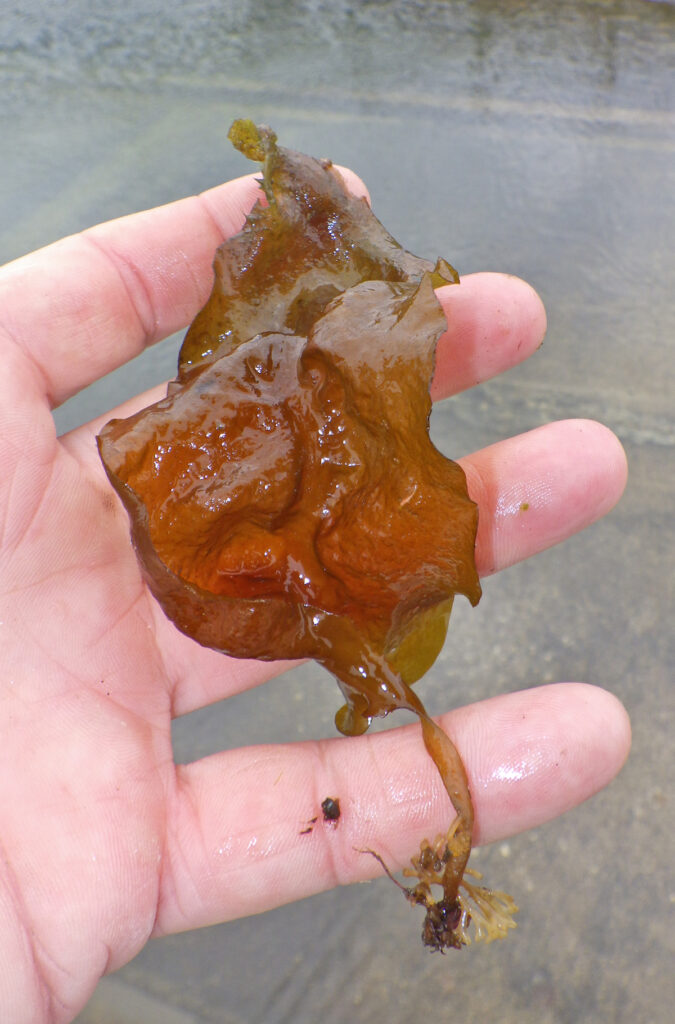Pom-pom weed
Caulacanthus okamurae
Also known as: n.a.
What does it look like?
Red clump-forming seaweed species, which forms an irregular mat made up of bright red springy pom-poms of about 4 cm in height with multiple holdfasts.
Instead of having a clear main stem, the plant is bush-like with irregularly dividing branches, about 0.2 mm thick. The ultimate branches are short and appear to have thorns which are clearing visible using a microscope.
Distinguishing features
The thorns at the ultimate branches are typical for the species and can be especially helpful in distinguishing it from other similar species.
Confusion with similar species
Many very similar looking red algae may be found in Irish waters. The thorns at the ultimate branches can help to distinguish between Caulacanthus okamurae and these species. Where other species may be rare, C. okamurae has the potential to completely dominate the intertidal zone, as it does at various locations on dikes in the Netherlands. This behaviour, typical for an invasive species, may reveal its presence on dikes where previously such a completely red coloured zone was absent.
What is its origin?
Northwest Pacific
Habitat
Caulacanthus okamurae can be found in the intertidal on moderately to very exposed rocky shores, dikes and harbour walls. There it grows in irregular clumps on the rocks, mussels and in between other clump forming seaweeds, or on larger seaweeds.
Presence in Ireland
Not yet recorded on the island of Ireland, but already common on the south and west coasts of England, sighted in Scotland and abundantly present on the dikes in the south of the Netherlands.
Behaviour and Spread
In Great Britain most plants appear to be sterile indicating that the species is mainly spread by fragmentation, reattachment and regeneration. Seawater temperatures above 19 degrees are necessary for sexual reproduction, which will be a limiting factor in Great Britain and Ireland. The main means of dispersal by which this species may arrive and spread in Ireland, is therefore expected to be fragmentation. The fragmented branches can drift over long distances with currents, after which they can reattach and grow on. One plant can actively form additional branches that can attach themselves to the surface next to the original specimen, by doing so, this individual of only a few centimetres in size may blanket large areas
Potential nuisance for aquaculture
Intertidal oysters and mussels could potentially be overgrown by this seaweed; however, it is unclear to what degree these “clumps” with 0.2 mm thick branches will limit the water flow to oysters and mussels
Key Management Actions
- When transporting oysters within Ireland and/or importing oysters from countries like France where the species is present, make certain that you check them for this seaweed species. As the species tends to be common when it is there, it will not be hard to spot. Oyster transports are assumed to be one of the main transport vectors of Caulacanthus okamurae across Europe.

